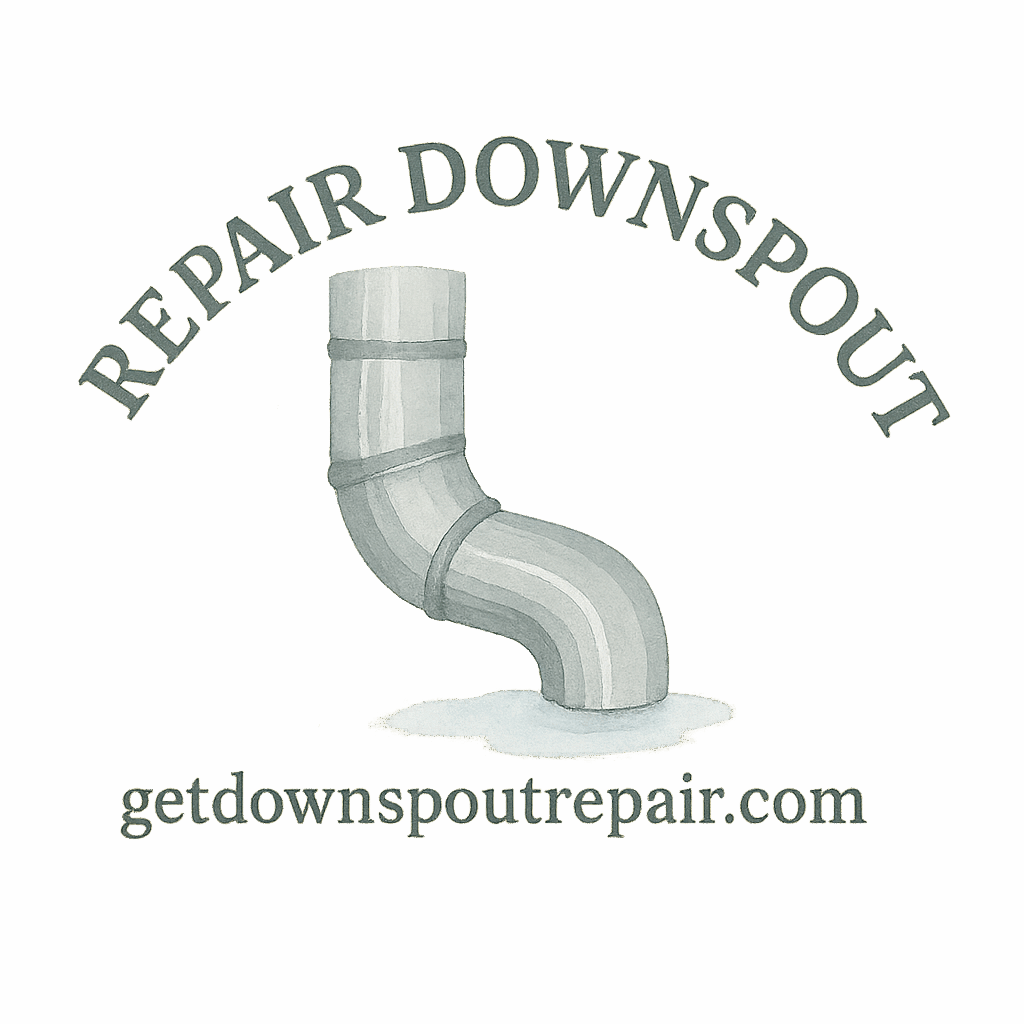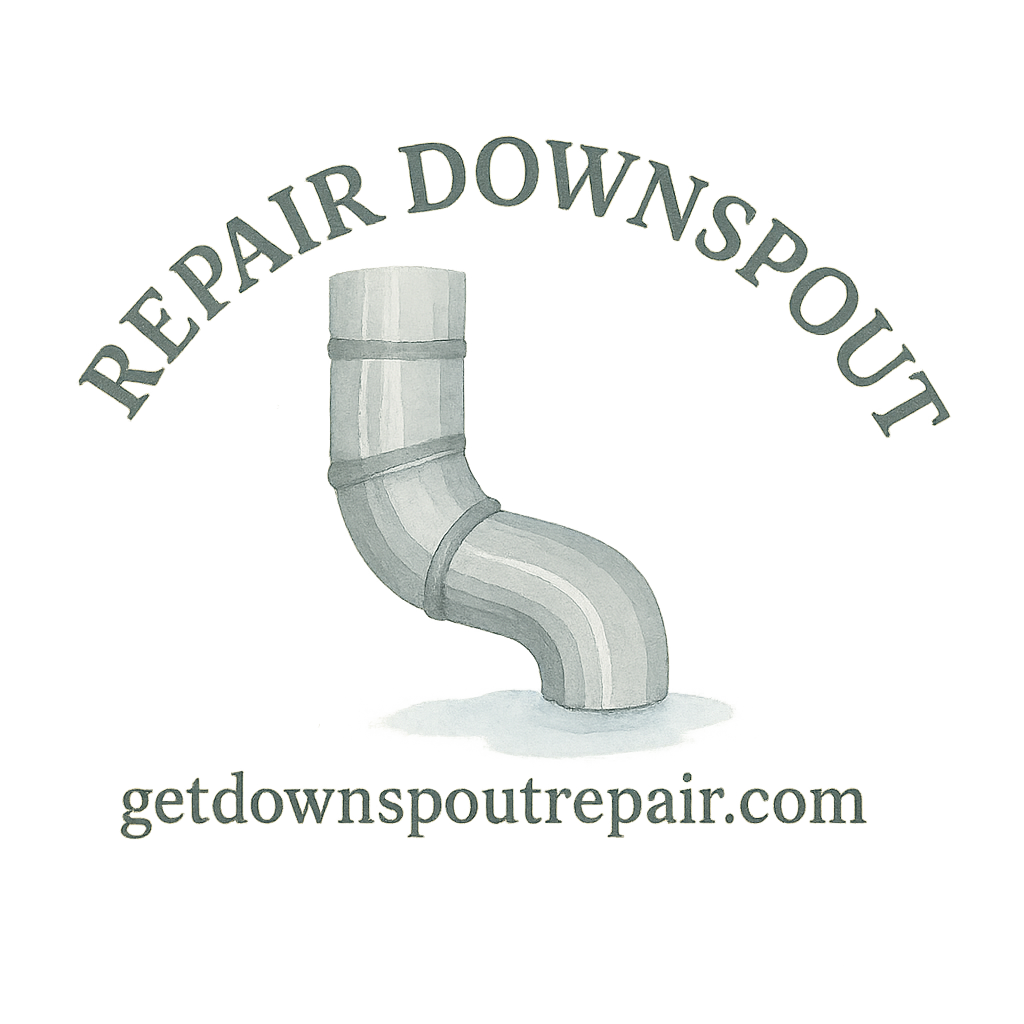Introduction: Why Downspout Repair Matters
If you’ve ever walked outside during a heavy storm and noticed water spilling everywhere but not where it’s supposed to go, chances are your downspouts are the culprit. These humble pipes may not seem glamorous, but they’re your home’s first defense against water damage. Ignoring downspout issues can lead to flooded basements, foundation cracks, and expensive landscaping repairs.
That’s why learning DIY downspout repair techniques is not only empowering but also a huge money-saver. In this guide, we’ll walk you through 10 expert repair methods you can handle yourself—no contractor needed.
Understanding Downspouts and Their Role
How Downspouts Protect Your Home’s Foundation
Your gutters collect rainwater from the roof, and your downspouts are responsible for carrying that water safely away from your foundation. Think of them like the plumbing system for your house exterior—if they fail, the water doesn’t have anywhere good to go.
Common Downspout Problems Homeowners Face
Some of the most frequent issues include:
- Clogs from leaves, twigs, or even small animals.
- Leaks where seams split or rust forms.
- Loose sections that pull away from the house.
- Poor drainage, where water pools too close to the foundation.
These problems may sound small, but left untreated, they can lead to serious damage.
Essential Tools and Materials for DIY Downspout Repair
Before you start fixing anything, it’s smart to gather the right gear.
Basic Tools Every Homeowner Should Have
- Ladder (sturdy and tall enough for your gutters)
- Work gloves
- Screwdriver or drill
- Plumber’s putty or silicone sealant
- Measuring tape
Optional but Helpful Tools for Easier Repairs
- Gutter scoop or leaf blower
- Hacksaw (for cutting replacement pieces)
- Caulking gun
- Rubber mallet
- Downspout snake or auger
You don’t need to invest in premium equipment right away, but using the right DIY tools will make repairs smoother.
Safety First: Precautions Before Starting Repairs
Before you climb that ladder, remember: safety comes first.
- Always work with a partner who can hold the ladder steady.
- Wear slip-resistant shoes.
- Avoid working in wet or windy conditions.
- Use protective eyewear when clearing debris.
A simple slip could cause more damage to you than the downspout—so don’t take shortcuts.
10 Expert DIY Downspout Repair Techniques
Now let’s get into the good stuff—hands-on repair tips you can do today.
1. Clearing Downspout Clogs Efficiently
Signs of a Clogged Downspout
- Water overflowing from gutters.
- Pooling water around the foundation.
- Strange gurgling noises when it rains.
Best Methods for Unclogging
Try flushing the downspout with a garden hose. If that doesn’t work, use a plumber’s snake or leaf blower. For stubborn clogs, disassemble the downspout, clear the blockage, and reattach it.
👉 Learn more about downspout clog issues and prevention strategies.
2. Reconnecting Loose Downspout Sections
Downspout sections can disconnect over time due to strong winds or poor installation. Use screws or rivets to reconnect them securely. For extra stability, add straps or brackets.
Explore this guide on repair basics for step-by-step instructions.
3. Fixing Leaks with Sealant or Tape
Leaks are usually caused by worn-out seams or tiny cracks. Apply silicone sealant or waterproof tape to seal gaps. For larger holes, patch with aluminum flashing and sealant.
Pro tip: Always dry the area completely before applying sealant.
4. Replacing Rusted or Damaged Downspout Pieces
Sometimes repair isn’t enough—you’ll need a replacement. Measure the damaged section, cut it out with a hacksaw, and install a new piece. Secure it with screws and seal the joints.
This simple swap can extend the life of your entire system.

5. Adjusting Downspout Extensions for Proper Drainage
If water is pooling near your foundation, your extension might be too short. Add or adjust an extension so water flows at least 5 feet away.
Check out drainage protection tips to prevent costly foundation issues.
6. Installing Splash Blocks to Prevent Soil Erosion
Splash blocks are simple, low-cost solutions placed under downspout outlets. They guide water away and prevent soil from washing out.
Think of them as a “landing pad” for rainwater.
7. Securing Downspouts with Brackets and Straps
Loose downspouts can rattle in the wind or fall off completely. Secure them with metal brackets every 6–8 feet. For added durability, use corrosion-resistant screws.
👉 See the list of repair tools recommended by pros.
8. Repairing Elbows and Joints
Elbows often take the brunt of water flow and can crack or come loose. Replace damaged elbows, seal joints with caulk, and ensure water flows smoothly through the bend.
9. Painting and Coating for Extra Protection
Painting your downspouts not only improves curb appeal but also protects against rust. Use outdoor-rated paint or a weatherproof coating.
This is especially helpful if you live in areas with harsh winters.
10. Seasonal Maintenance to Extend Downspout Life
A little preventive care goes a long way:
- Clean gutters every spring and fall.
- Check brackets after storms.
- Flush downspouts twice a year.
Following these steps reduces the need for constant repairs.
When to Call a Professional Instead of DIY
DIY works for minor issues, but if your downspouts are severely damaged, detached from the house, or causing foundation problems, it’s time to call a licensed contractor.
For reliable help, check out professional downspout services.
Cost-Saving Tips for Downspout Repairs
Worried about expenses? Here are a few budget-friendly ideas:
- Buy materials in bulk.
- Reuse brackets if they’re still solid.
- Learn simple fixes with this DIY repair guide.
- Compare prices of costs and materials before shopping.
Preventive Measures to Avoid Future Problems
Regular Gutter Cleaning and Inspections
Don’t let debris pile up. A seasonal gutter cleaning routine will save you from most clogs.
Using Quality Products and Tools
Cheap materials fail quickly. Invest in quality products that withstand harsh weather.
Conclusion
Your downspouts may not be glamorous, but they’re essential for keeping your home safe from water damage. With these 10 expert DIY downspout repair techniques, you can handle most issues on your own and save serious money. Just remember—regular maintenance, the right tools, and a little bit of elbow grease can keep your system running smoothly for years.
If problems get too big to handle, don’t hesitate to reach out to a pro. But for most repairs, you’ve now got the skills and confidence to get it done yourself.
For more resources, explore:
FAQs
1. How often should I clean my downspouts?
At least twice a year—spring and fall are ideal.
2. What’s the best sealant for downspout leaks?
Silicone-based outdoor sealant works best for small cracks and seams.
3. Can I use PVC pipe instead of metal downspouts?
Yes, but metal generally lasts longer and resists UV damage better.
4. How far should my downspout extension reach?
At least 5 feet away from the foundation to prevent water pooling.
5. Do splash blocks really make a difference?
Absolutely—they prevent soil erosion and direct water flow properly.
6. What’s the lifespan of a typical downspout?
With regular maintenance, metal downspouts can last 20–30 years.
7. When should I replace instead of repair?
If more than 30% of your downspout is rusted, cracked, or detached, replacement is more cost-effective.


